World War II and Its Aftermath 1931-1955
History
aircraft carrier
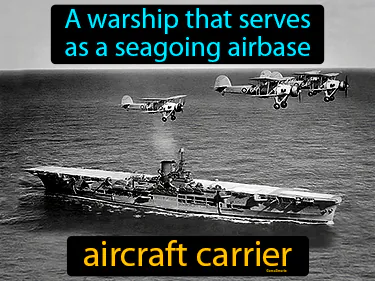
A warship that serves as a seagoing airbase. Aircraft carrier. An aircraft carrier is a large naval ship where planes can take off and land, playing a crucial role in military operations.
Anschluss
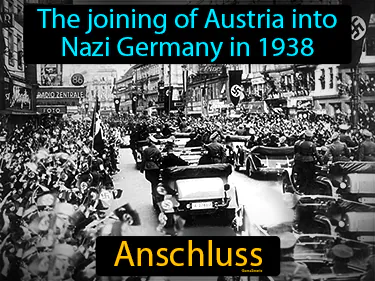
The joining of Austria into Nazi Germany in 1938. Anschluss. Anschluss refers to the annexation of Austria by Nazi Germany in 1938.
appeasement
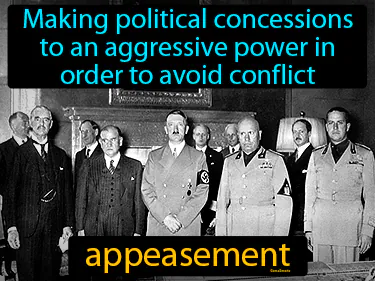
Making political concessions to an aggressive power in order to avoid conflict. Appeasement. It's when countries give in to the demands of aggressive nations to avoid war, like Britain and France did with Nazi Germany before World War II.
Axis powers
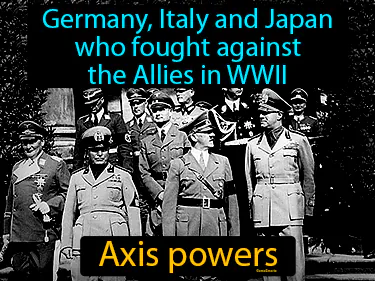
Germany, Italy, and Japan who fought against the Allies in WWII. Axis powers. The Axis powers were countries that formed an alliance to fight the Allies during World War II.
Bataan Death March
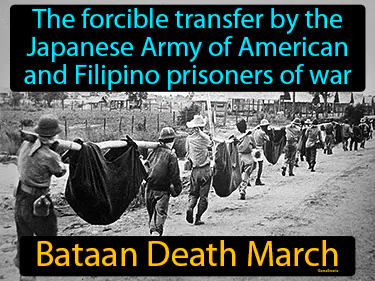
The forcible transfer by the Japanese Army of American and Filipino prisoners of war. Bataan Death March. The Bataan Death March was a brutal forced march of Allied prisoners by Japanese forces in 1942 during World War II.
blitzkrieg
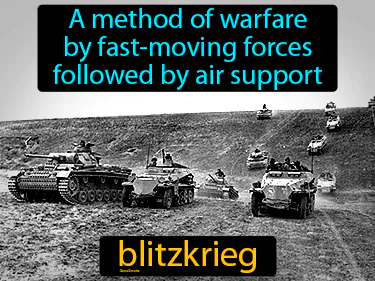
A method of warfare by fast-moving forces followed by air support. Blitzkrieg. Blitzkrieg is a German tactic used in World War II that involves quick, surprise attacks to overwhelm the enemy.
Cold War
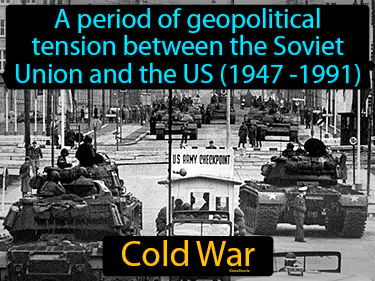
A period of geopolitical tension between the Soviet Union and the US 1947-1991. Cold War. The Cold War was a time when the US and Soviet Union competed for global influence without direct military conflict.
concentration camp
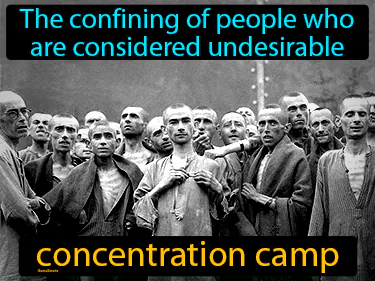
The confining of people who are considered undesirable. concentration camp. A concentration camp is a place where large groups of people, often during wartime, are detained under harsh conditions without trial.
D-Day
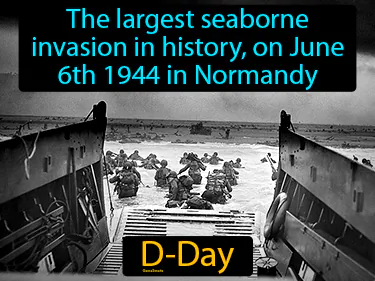
The largest seaborne invasion in history, on June 6th 1944 in Normandy. D-Day. It was the day Allied forces began liberating Western Europe from Nazi control during World War II.
Douglas MacArthur
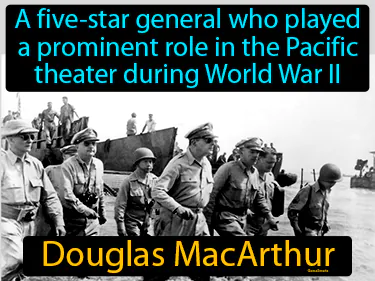
A five-star general who played a prominent role in the Pacific theater during World War II. Douglas MacArthur. He was a key military leader who helped lead Allied forces to victory over Japan.
Dunkirk
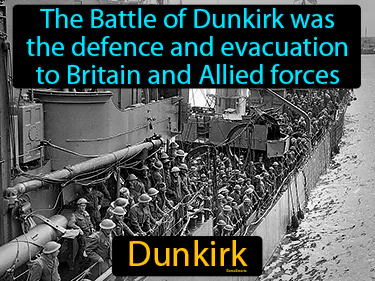
The Battle of Dunkirk was the defence and evacuation to Britain and Allied forces. Dunkirk. Dunkirk was a key World War II event where Allied soldiers were rescued from Nazi-occupied France.
Dwight D Eisenhower

The 34th president of the United States 1953 - 1961 Dwight D. Eisenhower. Dwight D. Eisenhower was a U.S. general and president who led Allied forces in World War II and helped shape the post-war world.
Francisco Franco
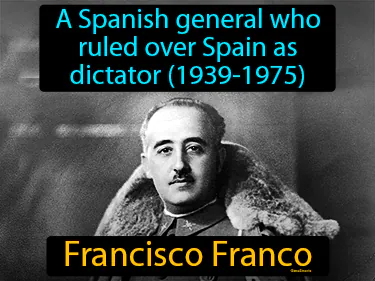
A Spanish general who ruled over Spain as dictator 1939-1975. Francisco Franco. He was the leader who established a long-lasting authoritarian regime in Spain after the Spanish Civil War.
General Erwin Rommel
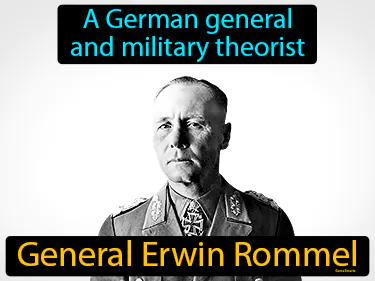
A German general and military theorist. General Erwin Rommel. He was a prominent commander in World War II, known for his leadership in North Africa.
Hiroshima
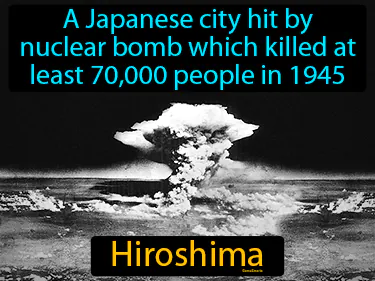
A Japanese city hit by nuclear bomb which killed at least 70,000 people in 1945. Hiroshima. Hiroshima is a city in Japan that was devastated by the first atomic bomb used in warfare during World War II.
Holocaust
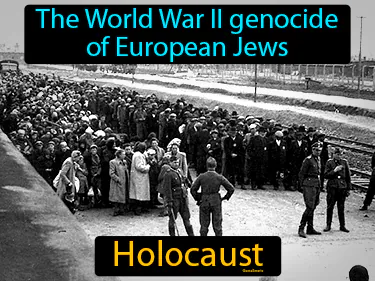
The World War II genocide of European Jews. Holocaust. The Holocaust was the systematic, state-sponsored persecution and murder of six million Jews by the Nazi regime and its collaborators during World War II.
island-hopping
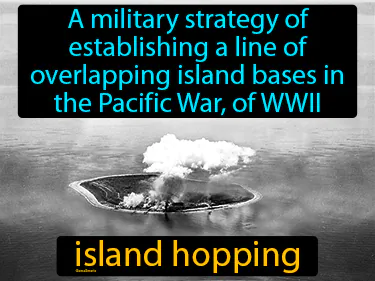
A military strategy of establishing a line of overlapping island bases in the Pacific War, of WWII. Island-hopping. Island-hopping was a strategy used by the Allies in WWII to capture key islands and gradually move closer to Japan.
kamikaze
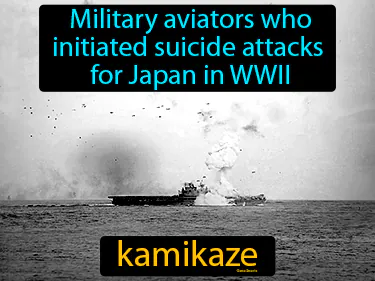
Military aviators who initiated suicide attacks for Japan in WWII. Kamikaze. In history, kamikaze refers to Japanese pilots who deliberately crashed their planes into enemy targets during World War II as a form of suicide attack.
Lend-Lease Act
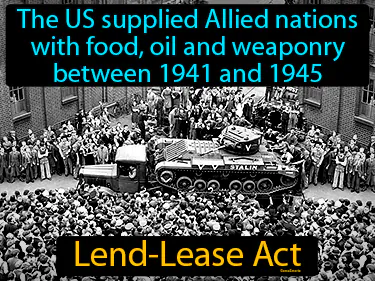
The US supplied Allied nations with food, oil, and weaponry between 1941 and 1945. Lend-Lease Act. The Lend-Lease Act was a program where the US sent supplies to help Allied countries during World War II.
Luftwaffe
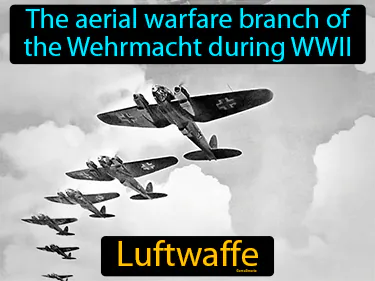
The aerial warfare branch of the Wehrmacht during WWII. Luftwaffe. The Luftwaffe was Nazi Germany's air force during World War II.
Manhattan Project
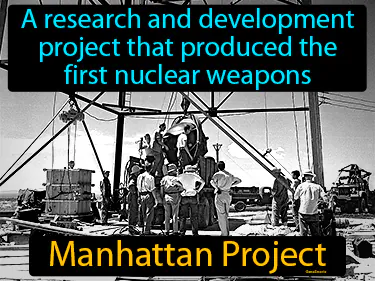
A research and development project that produced the first nuclear weapons. Manhattan Project. The Manhattan Project was a secret U.S. effort during World War II to develop the atomic bomb.
Marshall Plan
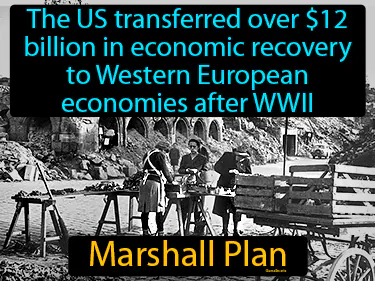
The US transferred over 12 billion in economic recovery to Western European economies after WWII. Marshall Plan. The Marshall Plan was a US initiative to aid Western Europe by providing economic support to help rebuild after the devastation of World War II.
Nagasaki
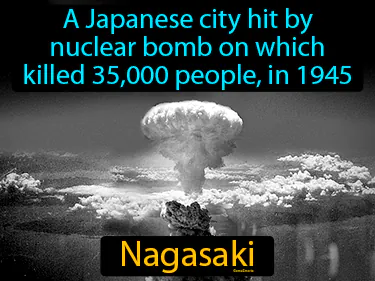
A Japanese city hit by a nuclear bomb on which killed 35,000 people, in 1945. Nagasaki was one of the two cities in Japan where the United States dropped atomic bombs during World War II, which led to Japan's surrender and the end of the war.
NATO
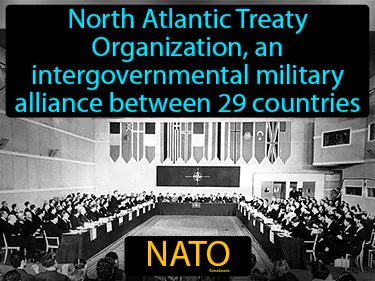
North Atlantic Treaty Organization, an intergovernmental military alliance between 29 countries. NATO. NATO is a military alliance formed in 1949 to provide collective security against the Soviet Union.
Nazi-Soviet Pact
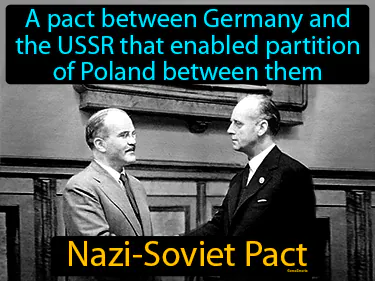
A pact between Germany and the Soviet Union that enabled partition of Poland between them. Nazi-Soviet Pact. It was a 1939 agreement where Germany and the Soviet Union agreed not to attack each other and secretly divided Eastern Europe into spheres of influence.
Neutrality Acts
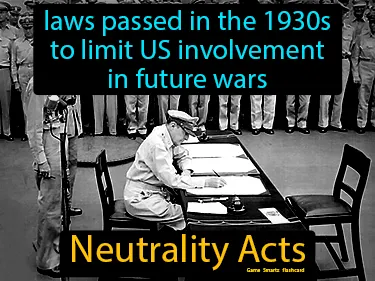
Laws passed in the 1930s to limit US involvement in future wars. Neutrality Acts. The Neutrality Acts were a series of laws aimed at keeping the United States out of international conflicts by banning arms sales and loans to countries at war.
Nuremberg
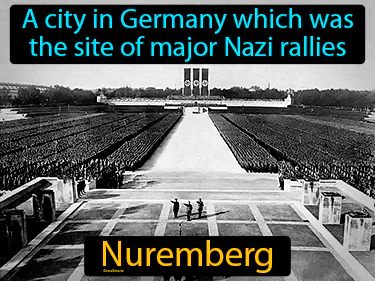
A city in Germany which was the site of major Nazi rallies. Nuremberg is a historic city known for the Nuremberg Trials, where Nazi leaders were prosecuted after World War II.
pacifism
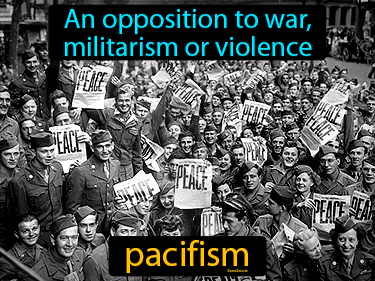
An opposition to war, militarism or violence. Pacifism. Throughout history, pacifism is the belief in resolving conflicts without using violence.
Rosie the Riveter
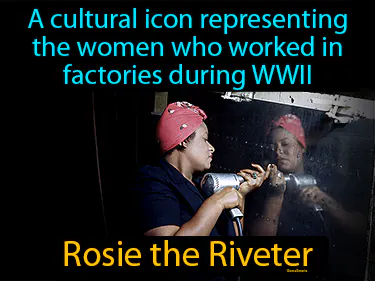
A cultural icon representing the women who worked in factories during WWII. Rosie the Riveter. Rosie the Riveter symbolizes the American women who took on industrial jobs to support the war effort during World War II.
Stalingrad
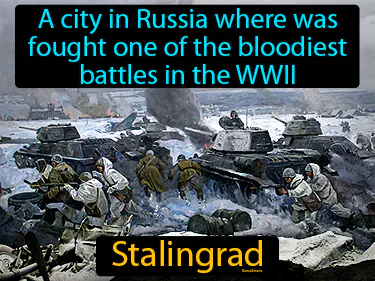
A city in Russia where was fought one of the bloodiest battles in the WWII. Stalingrad. Stalingrad was the site of a major turning point in World War II, where the Soviet Union defeated Nazi Germany in 1943.
Sudetenland
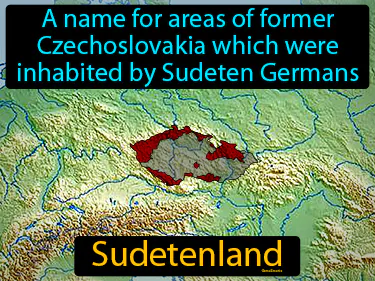
A name for areas of former Czechoslovakia which were inhabited by Sudeten Germans. Sudetenland. Sudetenland was a region given to Nazi Germany in 1938 as part of the Munich Agreement, which aimed to appease Hitler and avoid conflict.
Truman Doctrine

A foreign policy to counter Soviet geopolitical expansion. Truman Doctrine. The Truman Doctrine was a U.S. policy established in 1947 to stop the spread of communism by providing economic and military support to countries resisting Soviet influence.
United Nations
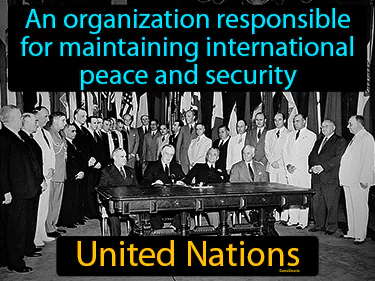
An organization responsible for maintaining international peace and security. United Nations. The United Nations is a global organization formed after World War II to promote peace, cooperation, and prevent future conflicts among countries.
V-E Day
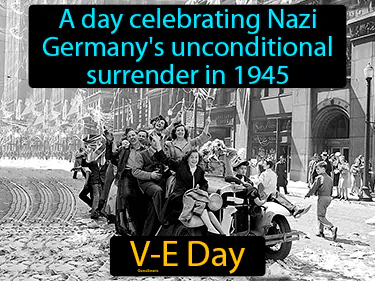
A day celebrating Nazi Germany's unconditional surrender in 1945. V-E Day. V-E Day marks the end of World War II in Europe when Nazi Germany surrendered to the Allies.
Vichy
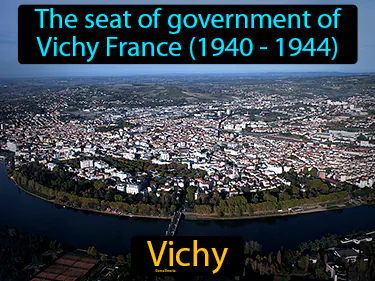
The seat of government of Vichy France 1940 - 1944. Vichy. Vichy was the capital of unoccupied France under German control during World War II.
Warsaw Pact
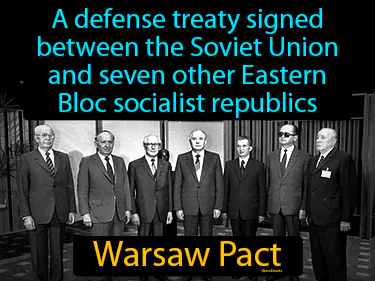
A defense treaty signed between the Soviet Union and seven other Eastern Bloc socialist republics. Warsaw Pact. The Warsaw Pact was a military alliance formed in 1955 to counter the NATO alliance during the Cold War.
Yalta Conference
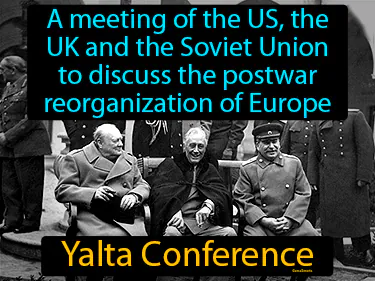
A meeting of the US, the UK and the Soviet Union to discuss the postwar reorganization of Europe. Yalta Conference. The Yalta Conference was a 1945 meeting where Allied leaders planned the division and reconstruction of Europe after World War II.